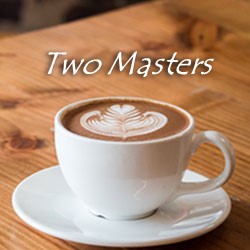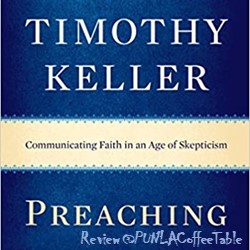I would like to share with you a book which was compiled by James Holding “Defending the Resurrection – Did Jesus Rise from the Dead?” This book is required reading for my seminary class. I have decided this is a potential resource that at least some of you might be interested in. So, I am going to share my book review and summaries with you.
Episode 23V04 –Defending the Resurrection (Written by Kip Wehrman© 04/12/2023)
Hello my friends. Thanks for joining me today for an @ the PUNLA coffee table.
Okay the book is called “Defending the Resurrection – Did Jesus Rise from the Dead?” the author and editor is James Holding. This is a compilation of several essays by prominent Christian scholars addressing various critics and theories about the resurrection of Jesus. Holding states that “Christianity lives or dies based on the Resurrection.” This is a huge book more than 400 very large pages and a total of 44 chapters. Unfortunately for me, there is no audio book version.
Holding begins his introduction with a profound and fundamental statement about the Christian faith. In 1 Corinthians 15:14, Paul makes it very clear that if Jesus did not rise from the dead, then our faith is in vain. The primary argument is without the resurrection happening in the specific time and place, specifically as it is told in the Bible, then the “truth” of Christianity is lost.
The book is divided into five sections, 1) Exegetical Basis, 2) Philosophical Basis, 3) Ideological Basis, 4) Social Basis, and 5) Historical Basis.
The Exegetical arguments include essays about, The Spiritual Resurrection Argument; The Second Skin Theory; Were the Resurrection Accounts stolen from Older Material; Alternative Burial Traditions; Pondering the Passion of Prognostications; A Response to Dan Barker’s Did Jesus Really Rise from the Dead; and The Oldest Resurrection Narrative. All of these arguments contained in this section weave extrabiblical sources, like in the Talmud, apocrypha books and others, with first-century traditions both Jewish and pagan to show how the accounts of the resurrection in the bible are consistently presented, yet unique. In each of the essays the arguments against a physical bodily resurrection of Jesus are found to be without merit contextually, exegetically, and historically.
The Philosophical arguments include essays about Standards of Evidence and Extraordinary Claims; The Naturalist Dichotomy; Cavin’s Evidential Scheme; and Legal Evidence for the Resurrection. The argument against “Extraordinary Claims” is self-refuting as it excludes automatically claims that cannot be proven. The claim that the Resurrection violates Natural Law is again refuted by the argument itself. An inability to explain something is not a reason to reject the occurrence and any event like a resurrection is by its very definition supernatural thus not governed by natural law. Cavin’s scheme that there is a lack of historical evidence is also refuted. Although there is no physical evidence that is not contested, there is however a preponderance of historical circumstantial evidence in support of the Resurrection claims. The final chapter in this section lays out the legal tests for the evidence and witnesses. It provides a five point summary as to why the evidence for the resurrection would be considered to be legally admissible evidence.
The Ideological arguments include essays about, Why was Jesus Resurrected; Did the Jews Get Resurrection from Zoroastrians; and The Vindication of the Messiah: Why Resurrection. All attempts to make Jesus’ Resurrection into a pointless exercise fail to consider the cultural perspectives of the first-century Jew or gentile. The Zoroastrians argument is refuted by historical evidence that the resurrection beliefs in Zoroastrianism dated to after the gospels eliminating the possible borrowing argument. The final chapter in this section details three commonly held perspectives on vindication, 1) Resuscitation, 2) Resurrection, and 3) Assumption. The author, Jonathan Kendall, defines each perspective then concludes with “the simplest answer is perhaps the best one.” Jesus was made bodily alive again, just as the Bible states. A true bodily resurrection.
The Social arguments include 21 essays reviewing various social or cultural arguments about the resurrection. In order to be brief, I will group and summarize these essays. A bulk of the first part of this section is spent educating us on cultural and social barriers to the Resurrection story. These barriers are presented as evidence against the “made up story” claim. Cultural issues like the honor/shame culture problem with Jesus’ death by shameful crucifixion, or the problem with women as primary witnesses in a culture in which women had no standing, and the prejudices against people from rural areas like Galilee. All of these cultural issues were working against the early Christian movement, yet they held on to these despite the cultural barriers they created. The authors use this as strong evidence for the validity and historical accuracy of the Bible accounts. This section also includes essays that address the significant difference between the Christian resurrection claims and those of Mormonism, Islam and Mithraism.
In the last section of the book Holding includes 9 essays on the Historical arguments including, Was Joseph of Arimathea a Myth; Avalos contra Craig: a Historical, Theological, and Philosophical Assessment; Hallucinations and the Risen Jesus; Did Cognitive Dissonance Cause the Resurrection Appearances; The Swoon Theory; The Decomposition Theory; The Stolen Body Theory; The Wrong Tomb Theories; and The Evil Twin Theory. Each of these essays provide compelling support for the bodily resurrection of Jesus.
Holding reviews the skepticism about Joseph. There are, however, no inconsistencies to lead a reader to conclude Joseph was not a real person. Additionally, the role of Joseph of Arimathea in the burial of Jesus was consistent with all known early accounts of the death, burial and resurrection of Jesus.
The essay written by Travis James Campbell titled the Avalos contra Craig, was a brief yet complete look at some of the best support for the bodily resurrection of Jesus. The essay shows, from a historical basis, that the Christian resurrection hypothesis has significantly greater explanatory scope, power and plausibility than any of the proposed alternative views.
Jonathan Kendall writes an essay on the hallucination’s argument against the resurrection. This essay walks us through the various arguments. The final analysis is the resurrection of Jesus has none of the hallmarks of either a group or individual hallucination. Hallucinations do not give rise to new information. Typically, it is an adaptation of things the individual(s) have experienced or know about. The early Christian movement had many new concepts that were not available to the disciples prior to the bodily resurrection of Jesus.
Reagan Brown writes a brief essay that dismisses the claim of cognitive dissonance as being inapplicable in explaining the post-Crucifixion behavior of the disciples. Cognitive dissonance is a psychological process and Brown clearly shows that this concept is a misapplication in the case of the bodily resurrection of Jesus and the subsequent behavioral changes in the disciples.
Both Swoon and Decomposition theories do not hold up to scientific analysis. There is no evidence that either of these theories can provide any historical evidence for a similar occurrences. Also, there is no historical evidence for either in the accounts available to us from the first century.
The oldest and most controversial theory has always been the stolen body theory. In fact, this theory is already accounted for in the bible account itself. This theory is easily refuted by the fact of the physical guard of the tomb, and the psychological condition of the disciples after the crucifixion.
The ”Wrong Tomb” theory is also presented. The book contains several variations on this theory, but the conclusion, on every account is this thesis cannot possibly be supported with any known evidence.
The last essay is the Evil Twin Hypothesis which has no evidence. The basis for this hypothesis is beyond any reasonable consideration. It is at best a sensational attempt to distract from the actual evidence for the bodily resurrection of Jesus.
This book is laid out well for easy referencing. The arguments and talking points for addressing specific criticisms of the resurrection can be easily found and used. The topical way the book is organized allows the readers to skip to the specific sections that best address whatever specific issue they are dealing with. This is a powerful resource for Christians who are facing challenges to the validity or accuracy of the Bible accounts of the resurrection. However, this book is a very difficult to read for most lay people. It is not for a casual reader but for a more scholarly approach to each topic. Additionally, there are lots of overlapping arguments because of the way it has been organized and the many authors.
The book is an excellent reference book. In today’s world the internet is too often relied upon for such searches for information. Many of the arguments presented are not commonly known by Churchgoers. Holding’s book provides a vast trove of vetted authors and refuted critics which can be used by the average Churchgoers to address issues about the resurrection. The extensive references given in the notes sections of each chapter allow for easy cross-referencing and further research on specific topics mentioned in the book.
Okay. I did not love this book. I personally found Holding’s book very educational. I had not been presented with many of the criticisms which were contained in this book. I am very appreciative of the contents of this book. I would not recommend this book to a casual reader. However, if someone was looking for a good reference book with talking points they could easily put to memory, then I would highly recommend this book by James Holding. Each chapter contains a treasure trove of information. I was very interested in the historical and social arguments contained in this book. I will keep this book in my personal library and expect that I will reference it regularly for a variety of other topics as well.
Thank you for joining me @ the PUNLA Coffee Table today, I hope you’ll join us again. God Bless.
God bless.


